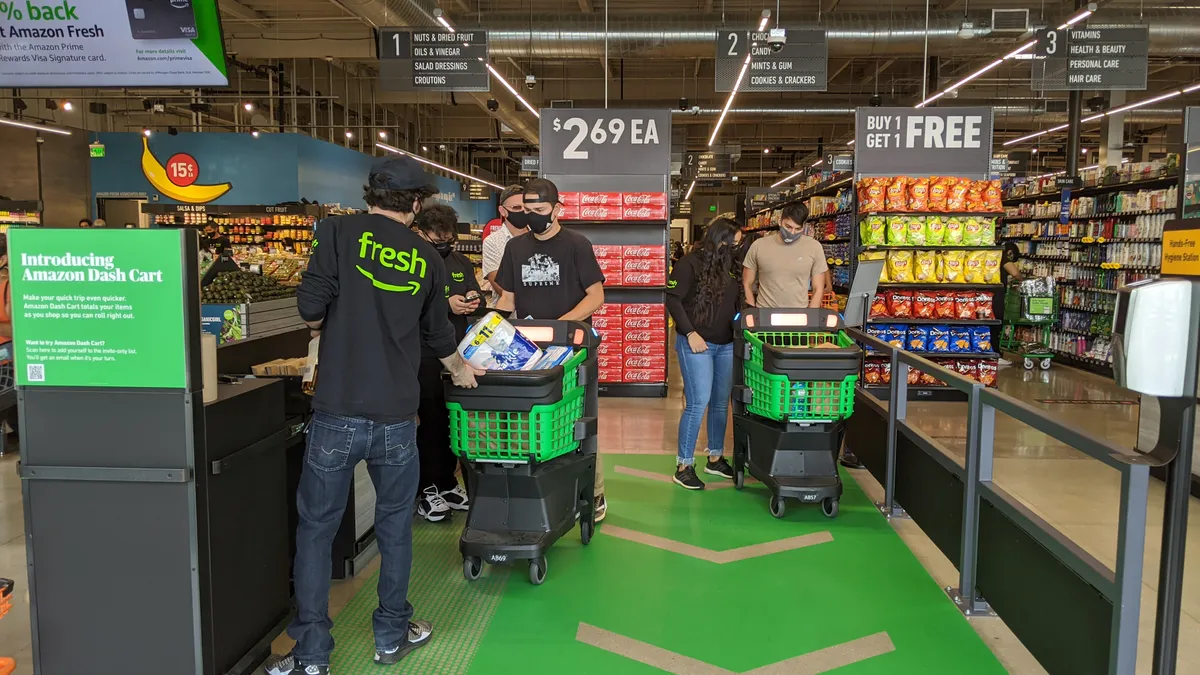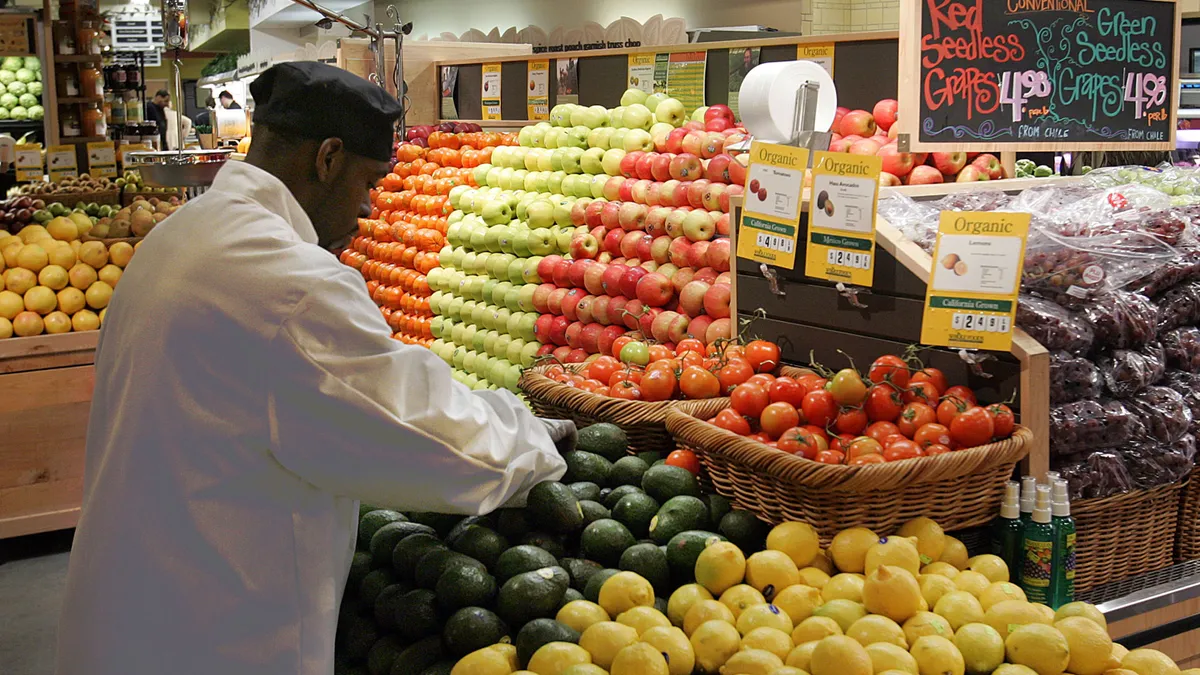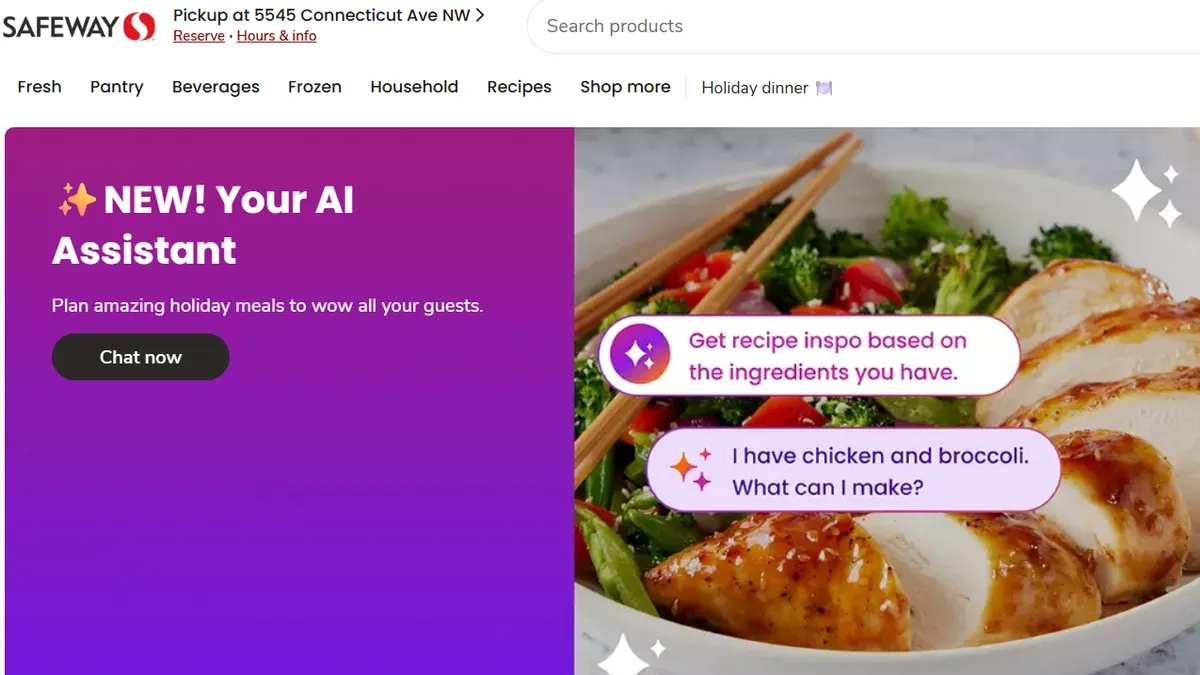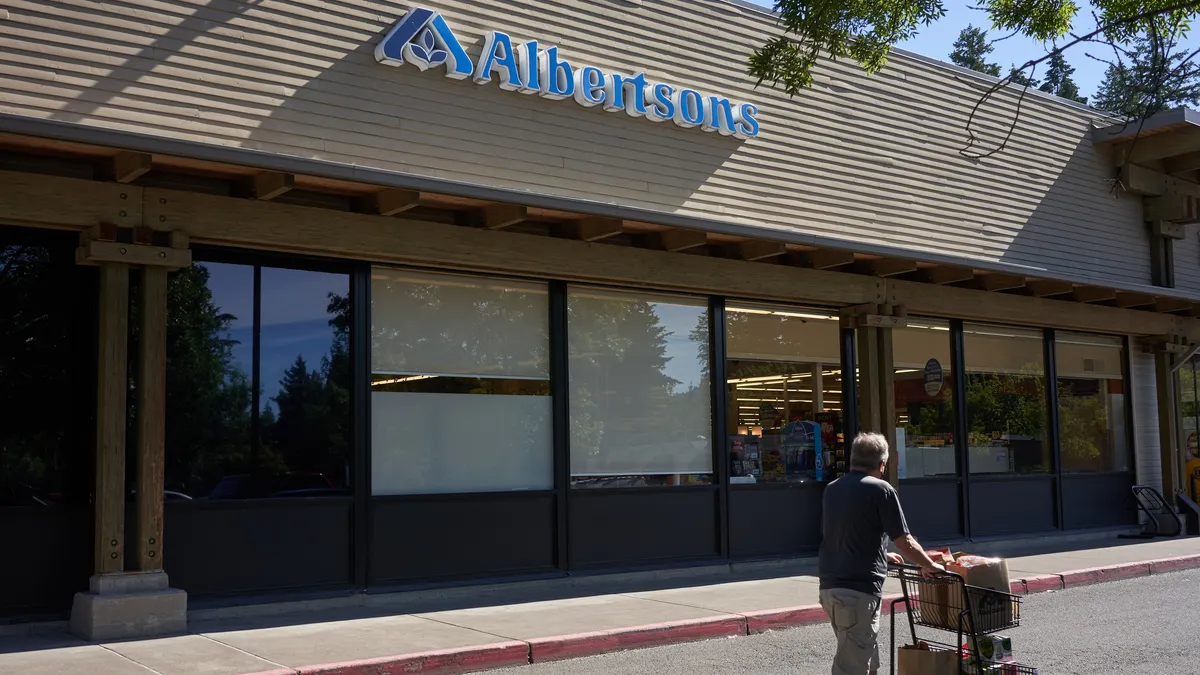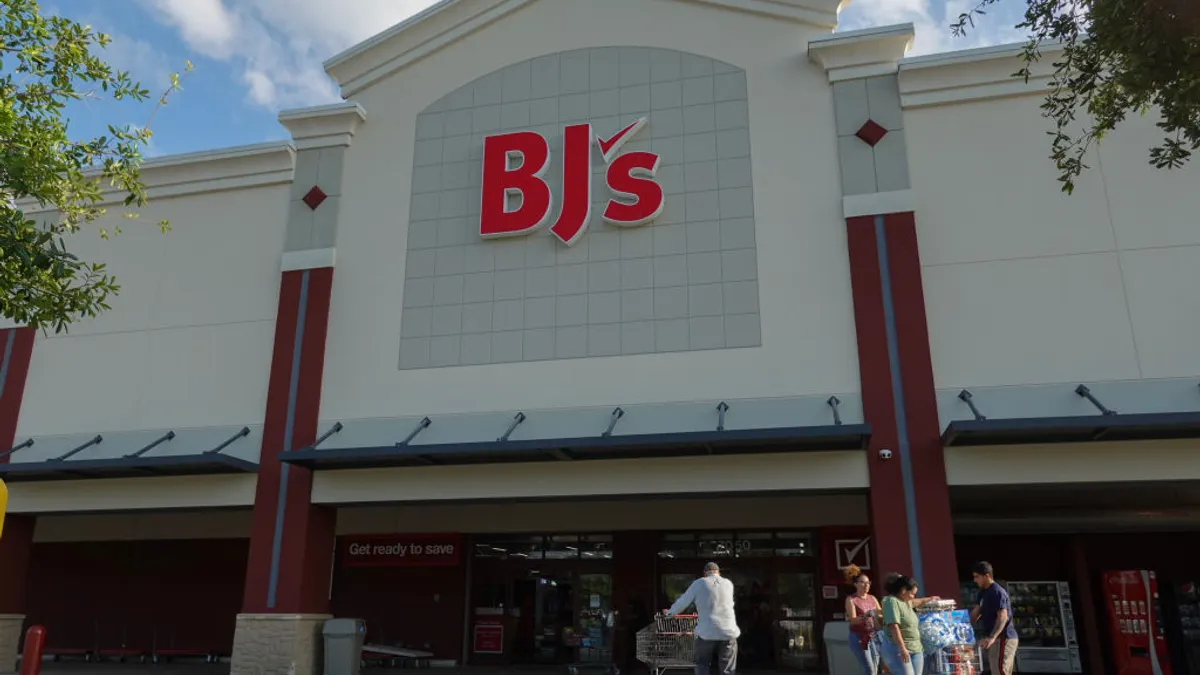Amazon has a reputation for being a ruthless and very effective industry disruptor. But in grocery, it’s going up against companies that have decades of experience routing dizzying arrays of perishable goods across the globe, stopping them on a dime, selling them cheap and still managing to eke out a profit.
This fact is not lost on Amazon’s vice president of grocery, Stephenie Landry. In a Q&A session on Wednesday with Recode’s Jason Del Rey, Landry expressed admiration for the modern food retail industry and said its tried-and-true focus on “consistent quality” is also Amazon’s North Star in grocery as it builds out a network of online services and physical stores.
“It’s a complicated business. It is very, very difficult,” she said. “I tell my friends, every time you’re walking into a grocery store, you’re walking into a miraculous place.”
She continued: “It’s a very, very well-functioning industry that gives consumers historically low prices, really great redundant selection and a pretty convenient experience. So in order to make it better, which is what we’re really focused on, you have to think differently and have a lot of innovations in the experience.”
Amazon has focused on its core online strengths by building out an e-grocery service that's available in more than 2,000 cities and towns. In an effort to supercharge that business as well as its broader retail ecosystem, last year it made Amazon Fresh membership a free perk under its Prime membership program.
But unlike other industries it has charged into during its more than 20 years in business, Amazon realizes it has to compete in a much less familiar brick-and-mortar retailing arena to effectively reach shoppers — a strategy the company has nevertheless embraced, as evidenced by its launch of two new grocery chains this year in addition to Whole Foods, the specialty retailer it acquired for $13.7 billion. Landry said that even as e-commerce leaped ahead during the pandemic, most consumers now and in the future will prefer a combination of online and in-store shopping.
Amazon’s inexperience running stores is all too apparent at this point, though, with Whole Foods struggling to rebound in more than three years under the e-commerce company’s ownership. Whole Foods is now lagging way behind other grocery retailers in foot traffic with trips down 25% in September from a year earlier, according to Placer.ai data cited by Bloomberg.
Amazon has injected its Prime membership program into Whole Foods store deals and offered a few rounds of highly publicized price cuts. It has also boosted Whole Foods’ pickup and delivery services, though reports now note Amazon Prime e-commerce shoppers are flooding stores in cities like San Francisco and negatively impacting the shopping experience.
Asked about the frenzied store environment at Whole Foods, Landry would only say that Amazon pays close attention to its consumer ratings and that it wants shoppers to have a “great experience” both online and offline. Whole Foods recently debuted a dark store model in Brooklyn that could broadly alleviate store fulfillment pressure, but Landry wouldn’t say if the grocer is building more locations, only noting that the company is testing and learning. Bloomberg reported Amazon and Whole Foods have considered opening additional dark stores.
Experts have been quick to caution that early stumbles by Amazon shouldn’t breed complacency, given the company’s near-limitless capital, its track record and its focus on testing and adjusting.
A case in point is Amazon’s proprietary technology, which often lives at the bleeding edge of innovation. Landry said Amazon wants to add a layer of technology to in-store shopping that elevates the experience for customers. This has fueled advancements in its Just Walk Out system like Amazon Go Grocery, its new palm-reading payment tool and the Dash Cart, which is currently in service at its Amazon Fresh store in California. And Landry said there are more developments forthcoming.
“We don’t just want to be in physical stores just for the purpose of being there,” she said. “We want to provide an alternative for customers that we think is really advancing the experience.”
Amazon’s tech prowess alone doesn’t guarantee success. Landry said that the Dash Cart was built to make fill-in trips faster, with each cart fitting around two grocery bags, but acknowledged that during the pandemic, many shoppers are doing stock-up shops. Early in the pandemic, Amazon, like many grocers, also struggled to meet online demand, with shoppers scrambling to find open delivery slots as stay-at-home orders went into effect.
But Amazon is learning and adjusting. Landry said shoppers like to use the Dash Carts as budgeting tools, since they give a running total of selected products, and hinted more innovations are in the works for the smart cart. She also said Amazon has developed a tool that will assign online shopping times to shoppers across its grocery properties when fulfillment slots run out — an innovation that she regretfully said came too late in the spring to be widely used.
Still, a surge in coronavirus cases this fall and winter, which health experts have cautioned could happen, would put this tool back into action. Other retailers also implemented wait-listing technology that addressed overflow demand. Landry said Amazon is preparing for all scenarios, though it’s expecting demand surges to be localized due to any virus outbreaks, cold and flu cases and weather.
A key topic for grocers these days is how to boost fulfillment through automation. Landry, however, said Amazon is more focused on implementing software that helps workers move more efficiently through its stores and warehouses. She also seemed to dismiss the idea of Amazon consolidating service under its many grocery properties, which include its various physical stores in addition to online properties like Prime Pantry and its primary marketplace.
“Customers are going to get more used to using the experiences we have to offer, and to really have a much more distinctive experience and feel really immersed in each brand,” she said.


